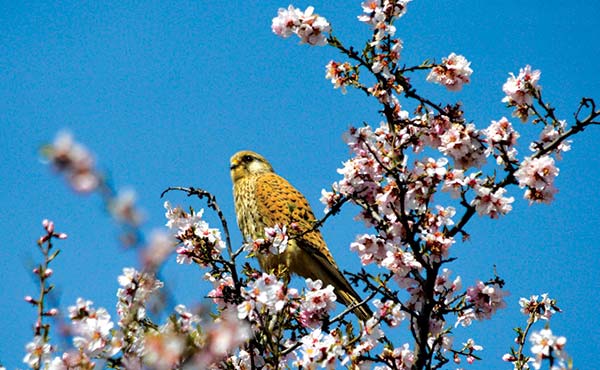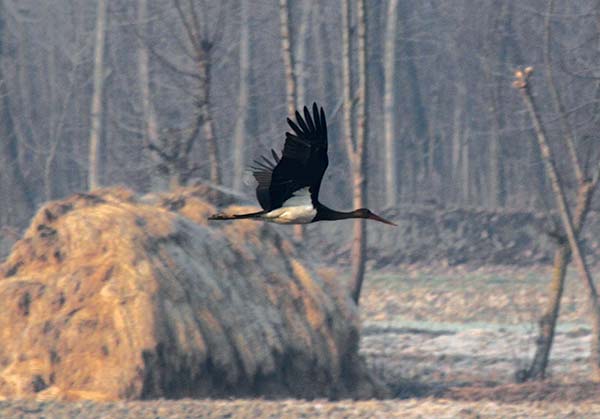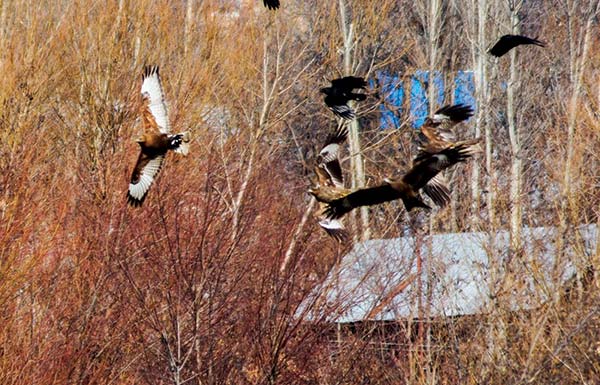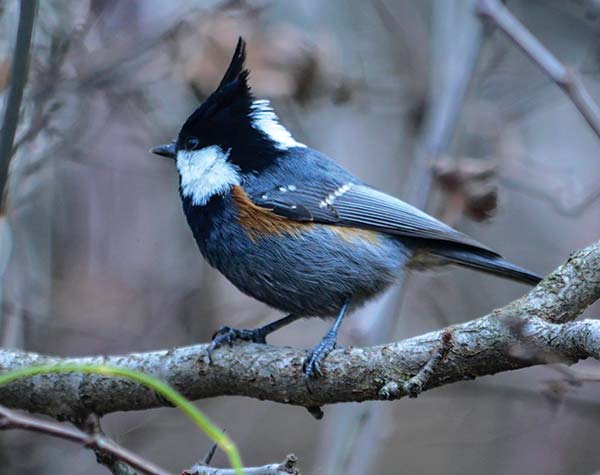Despite vanishing wetlands Kashmir continues to attract thousands of migratory birds every year. But there is more than one migration. Reports Shakir Mir

Photo: Shamoon Ishtiyaq
Every year during winters, wetlands across Kashmir are thronged by hundreds of passionate bird watchers and media persons who jostle their way to steal a glimpse of newly arriving migratory birds. These birds come in droves from areas as far as Siberia and Tokyo to escape the harsh cold and wallow in relatively tolerable winters of Kashmir.
But months before their arrival, Kashmir skies are frequented by other lesser known species of birds that make a stopover here during their course of migration. Their arrival doesn’t make it to the newspaper headlines. These birds arrive precisely between the intervening season of autumn and winter and largely go unnoticed due to their surreptitious advent. They include mostly rare species of raptors, storks and small passerine birds whose glimpse can become prized possession for bird watchers and wildlife enthusiasts. They are Kashmir’s Passage migrants.
“These are mostly non-wetland birds that stay for a week or a month,” says Intesar Suhail, a wildlife warden with J&K government, who has popularized the concept of avian conservation in Kashmir through social media. “They come from Central Asian states and countries like Mongolia to travel to northern Indian plains.”
These birds undertake migration from temperate to tropical areas and stay briefly in Kashmir valley where they could be sighted at relatively higher reaches, according to experts. Due to their gregarious behavior and scant knowledge of their precise arrival, experts say, they are neglected by even keen bird watchers.
Umar (24), a student and an avid bird photographer couldn’t believe his eyes when a sudden squeaky call overhead attracted his attention at Awantipur campus. When he raised his eyes to look above, he saw two huge raptors fighting among themselves. “I had never seen them before,” he says. “Normally I see black kites that are abundant but this time I realized I was sighting something unusual.”

Photo: Intesar Suhail
Umar identified the bird as Long Legged Buzzard, a bird of prey similar in appearance to eagle but with different features and coloration. He says that the birds exhibited a strange roller coaster behavior. “They flapped their wings while soaring high and then swiftly nosedived before beginning the loop again,” he says.
Observers say these birds don’t stay for longer period and therefore are a treat to the eyes if encountered.
“Normally you will only get to see these birds in special documentaries on channels like Discovery and Nat Geo,” says Saqib Bhat, a Fine Arts student and wildlife photographer.

Photo: Shams ul Haq Qari
In a detailed account of this bird in Kashmir, Sir Walter Lawrence wrote in his 1895 magnum opus The Valley of Kashmir, “The Long Legged Buzzard, in all stages of plumage, may be found in the valley from October to December. I have not noticed it after the winter snow has fallen.”
Earlier this month, Shams Ul Haq Qari, a student of journalism at government degree collage Baramulla discovered a flock of Black Storks flying over him at an orchard near Khawaja Bagh in Baramulla. “I immediately took out my camera and started clicking,” he says.
Experts say Black Stork is classified as a rare passage migrant and its sighting could be a rarity.
“I saw the bird myself some years ago at Sangam in Islamabad which was possibly its first ever sighting,” explains Intesar. “It is a very rare migrant.”
Qari, who saw them, believes that the birds might not have stayed or roosted anywhere near. “They hovered for some time and then disappeared which makes me believe they left for their further migration,” he says.
In a similar instance, Shamoon Ishtiyaq, a wildlife explorer, felt overwhelmed last autumn when, en-route to Takht –e – Suleman hillock, he witnessed a plethora of small grey colour birds called Spot-winged tits. “There were lakhs of them at one single place,” he says. “I could have practically caught them by hands.”
According to experts, many birds who are also native residents arrive in Kashmir as migrants during spring and autumn seasons, resulting in an exponential increase in their numbers. “When their numbers augment, they are sighted abundantly,” Intesar says. “There birds include Himalayan Jackdaw, Streaked Laughing Thrush, Great Tit and many more.”

Photo: Shamoon Ishtiyaq
A Sub-specie of Falcon called Kestrel is widely sighted in spring season. Locally called as Behar, the bird is part of of local folklore. There is a proverb in Kashmiri language – Behar hish agaa’di gazc’aan (You badger like a Kestrel) – used mostly when someone particularly female-folks annoy with habit of persistently asking for something. Though Kestrel is a common resident, its number is augmented due to passage migration in spring.
During autumn, urban areas witness a surge in number of Blue Whistling Thrush, an indigo colored mid-size bird, who is forced to descend in wake of bone-penetrating cold at upper reaches. This bird, locally called as Kumir Kaaw or Hazaar Dastaan from its Persian name, is known to produce a musical whistling note particularly during wee hours. Curiously, it coincides with the muezzins Fajr prayer call.
“When these birds fly over Himalayas, they are in search of places to rest before they would start their journey again,” an expert says. “and Kashmir is placed right next to the mighty Himalayan range.”
Unlike the wide variety of waterfowls whose visiting numbers are recorded, those of passage migrants aren’t. However, Intesar has been trying to promote their documentation through e-bird, a global initiative to preserve avian heritage and create an impressive data base. He has roped in members of Kashmir’s close-knit bird loving community to record and take note of their encounters. “J&K has emerged at number 5 on their website,” Intesar says. “Earlier we use to get barely 3 checklists. Now it has increased to some 120 checklists per month,” he adds with grin.














